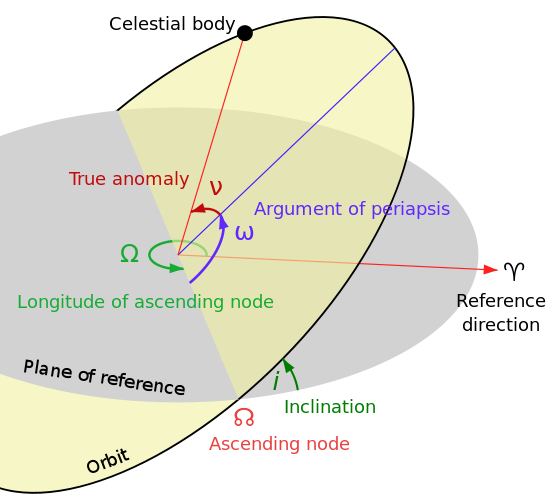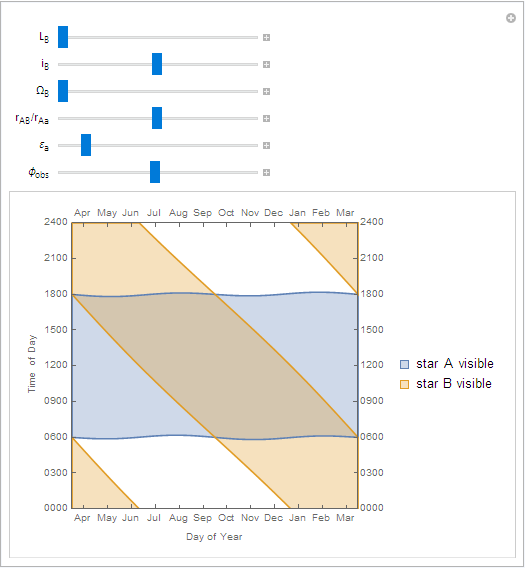Short Answer.
For scientific reasons I have reversed your star designations, making Star B the one that Planet X orbits and Star A the more distant star.
If planet X orbits Star B but not Star A, Star A should be at least ten times as far away from Planet X as Star B is, in order for the orbit of planet X to be stable. If this is supposed to be hard science fiction you will need a more expert opinion. Of course the distance between Star A and Star B can be many times the minimum of ten times the radius of Planet X's orbit around Star B.
If the distance between Star A and Star B is exactly 10 times the radius of Planet X's orbit around Star B, then some times Planet X will be exactly 11 times as far from Star A as from Star B. And sometimes Planet X will be only 9 times as far from star A as from Star B. The distance from Star A to Planet X will vary between 0.9 and 1.1 times the average distance.
And since the amount of light planet X receives from star A varies with the square of the distance, that amount will vary from 0.826 to 1.234 of the average amount.
If the distance between Star A and Star B is exactly 100 times the radius of Planet X's orbit around Star B, the amount of light that Planet X receives from Star A will vary between 0.980 and 1.019 of the average amount of light.
Since that is a smaller range of difference, as a general rule you would want the distances between Star A and Star B to be as many times greater as possible than the radius of the orbit of Planet X around star B.
But you also need the distance between Star A and Star B to be as small as possible compared to the radius of the orbit of Planet X around Star B. If you want Planet X to be interesting because it is habitable for Earth Humans, or has advanced multi celled life like trees and mammals, or has native intelligent beings.
If Star A is 10 times as far away from Planet X as Star B is, which I think is the minimum distance for Planet X to have a stable orbit, it will have to be 100 times as luminous as Star B to give Planet X as much light as Star B does. If Star A is only as luminous as Star B it will give Planet X only one percent of the light that Star B gives planet X.
If Star A is 100 times as far away from Planet X as Star B is, it will have to be 10,000 times as luminous as Star B to give Planet X as much light as Star B does. If Star A is only as luminous as Star B it will give Planet X only one hundredth of one percent (or 0.0001) of the light that Star B gives planet X.
You didn't specify the desired ratio between the apparent brightness of Star A and Star B as seen from Planet X. You just said Star A (your Star B) should give Planet X enough light to make a difference. And you didn't specify whether you meant enough light to make a difference in the temperature of Planet X or merely enough light to make a difference in it's illumination.
If you want Star A to shed as much light on Planet X as Star B does, then the ratio of their relative absolute luminosity must equal the square of the ratio of their relative distances from Planet X. If Star A is 10 times as distant as Star B it will have to be 100 times as luminous to appear exactly as bright in the sky of Planet X. If Star A is 100 times as distant as Star B it will have to be 10,000 times as luminous to appear exactly as bright in the sky of Planet X. If Star A is 1,000 times as distant as Star B it will have to be 1,000,000 times as luminous to appear exactly as bright in the sky of Planet X.
Thus if Star A and Star B have to have anything remotely resembling the same brightness in the sky of planet X, Star A should have at least several times the absolute luminosity of Star B, and possibly up to millions of times the luminosity. Thus Star A would be much intrinsically brighter than Star B. Thus Astronomers would call it A and call the star that Planet X orbits B. Because of the high probability that the more distant star would be more luminous than the star Planet X orbits, I switched the designations of the stars from what they were in your question.
Suppose that you desire star A to appear 0.0001 times as bright in the sky of Planet X as Star B. Then if Star A is 0.10 times as luminous as Star B, and 10 times as far from Planet X, it will appear to be 0.0001 times as bright from the surface of Planet X. If Star A is exactly as luminous as Star B, and 100 times as far from Planet X, it will appear to be 0.0001 times as bright from the surface of Planet X. If Star A is 1,000 times as luminous as Star B, and 1,000 times as far from Planet X, it will appear to be 0.0001 times as bright from the surface of Planet X. If Star A is 10,000 times as luminous as Star B, and 10,000 times as far from Planet X, it will appear to be 0.0001 times as bright from the surface of Planet X.
Thus even if Star A appears only 0.0001 times as bright as Star B as seen from Planet X, it could, depending on its distance, be tens, hundreds, or even many thousands of times as absolutely luminous as Star B, the star that Planet X orbits.
By comparison, the Sun has an apparent brightness as seen from Earth 398,110 times as bright as the apparent brightness of an average full moon. The apparent brightness of the full moon is 0.0000025 that of the Sun, so if Star B appears as Bright as the Sun from Planet X and Star A appears only 0.0001 as bright as star B as seen from Planet X that could still be about 40 times as bright as a full moon seen from Earth.
The absolutely most luminous star known to science is R136a1 in the Large Magellanic Cloud, about 8,710,000 times as luminous as the Sun. The least luminous known star is 2MASS J0523-1403, about 0.000126 times as luminous as the Sun. That gives a luminosity range of about 69,126,983,000 times. That should be enough for any desired difference in the luminosity of the two stars in the solar system of Planet X, right?
Wrong.
If you want Planet X to be interesting because it is habitable for Earth Humans, or has advanced multi celled life like trees and mammals, or has native intelligent beings, Planet X must have enjoyed a relatively constant amount of radiation from it's sun, Star B, for billions of years, since Earth is believed to be relatively typical, and it took billions of years for those things to develop on Earth.
Therefore Star B that Planet X orbits must have been a relatively stable main sequence star for billions of years in order for Planet X to be habitable for Earth Humans, or have advanced multi celled life like trees and mammals, or have native intelligent beings. And since both stars in the system would be the same age, Star A must also have been a relatively stable main sequence star for billions of years. When stars eventually leave the main sequence they usually change in ways that destroys all life on the planets that orbit them and may also destroy all life on planets orbiting other stars in the same star system.
And what types of stars will remain stable main sequence stars for billions of years? Stars of late spectral type F (starting at maybe type F8), type G, Type K, and type M. Thus Star B, that Planet X orbits, and Star A, in the same star system, would both have to be somewhere between about spectral type F8V to M9V, which would limit the possible range of their luminosity difference. I believe the extreme possible luminosity difference between Star A and Star B would be about 25 times.
But many scientists believe that stars from mid type K and all type M stars are not suitable for having habitable planets for various reasons. If that is correct the possible spectral types for Star B would be limited to about F8V to K5V. That gives a luminosity range of about six times for the difference between Star A and Star B. But since it is not specified whether Star A should have any habitable planets its spectral type can be between type F8V and type M9V.
So if you want your story to be anything like hard science fiction you should find more precise figures for the various limits listed before making your calculations, if you want Planet X to be interesting because it is habitable for Earth Humans, or has advanced multi celled life like trees and mammals, or has native intelligent beings. Unless the stars in the star system are younger and should not have planets as advanced as Planet X seems to be. Perhaps super powerful aliens terraformed Planet X millions of years ago and seeded it with life forms billions of years more advanced than it had time to evolve naturally, or even took Planet X from its original star system and moved it into the much younger star system it is now in.









